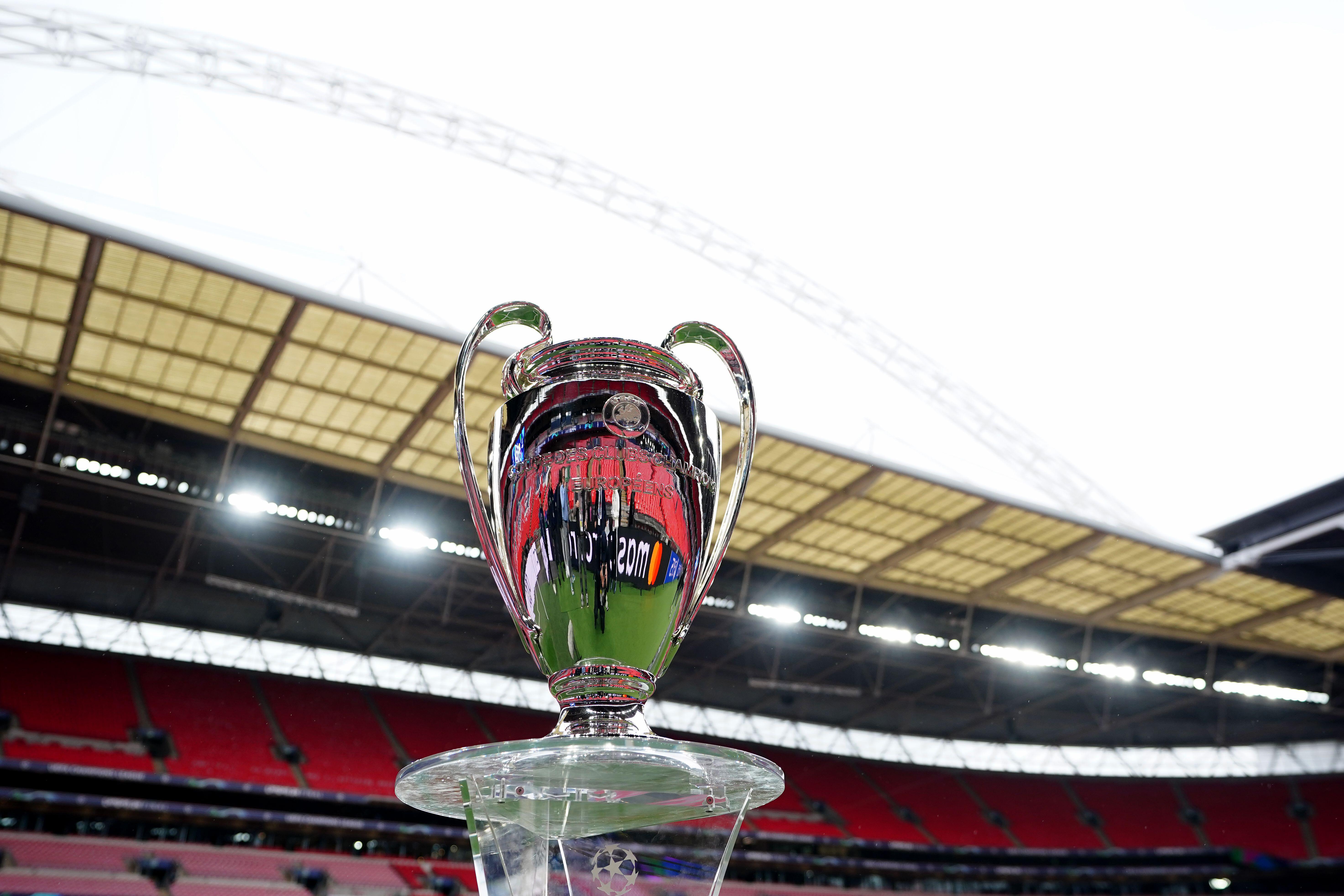'PR stunt' signing Martin Odegaard returns to Real Madrid with Arsenal: why bad reviews, pressure and a 'pitiless environment' led to the Norwegian moving to the Premier League
Martin Odegaard will captain Arsenal against Real Madrid in the second leg of the Champions League tonight, having spent his formative years battling expectations of being the Bernabeu's biggest star just a few years prior
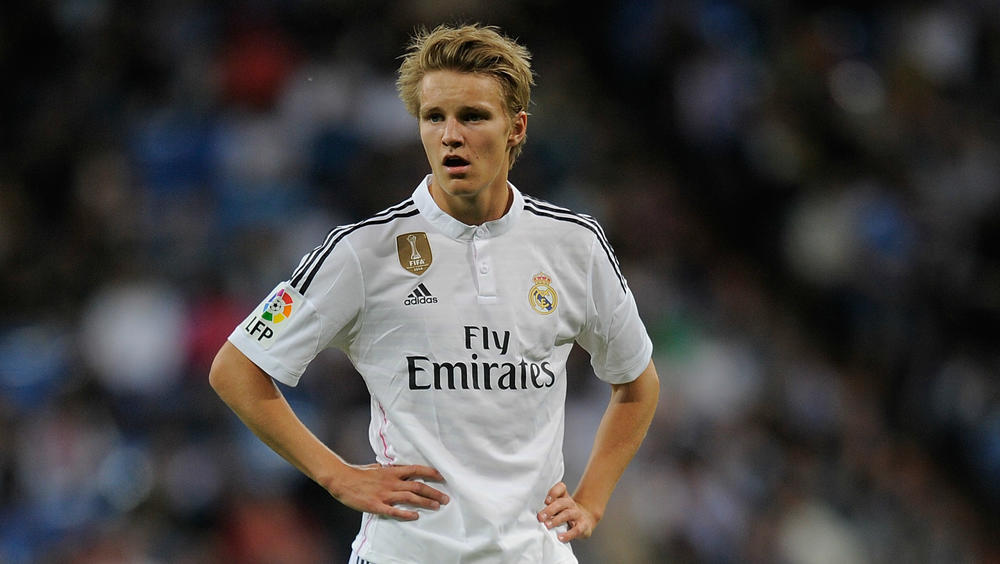
Tonight, Arsenal captain Martin Odegaard returns to Real Madrid, where he endured a high-profile spell – but was barely given a sniff of a chance.
The Norwegian caught the world's attention when he made the switch from Stromsgodset to Real Madrid as a teenager, signalling a sea change from Los Blancos in investing in the future.
But the dream soon turned sour – and after just eight league games, he left for Arsenal. Now, he goes back to the Bernabeu…
Martin Odegaard snubbed Arsenal for Real Madrid - amid all-timer hype
“I got to know about Martin Odegaard through the Norwegian press,” Norwegian football journalist Thore Haugstad now tells FourFourTwo.
“Everybody began writing about this kid who was scoring goals and playing with adults. You saw clips of him pirouetting in games, the great goals he was scoring and you realised… this is not normal.”
Especially in Norway. With a population of just over five million, the national team of this sleepy, icy landscape last played in a World Cup months before Martin was born in 1998. Rather like Erling Haaland, Odegaard owed his development not to the streets and the system, but to his father’s own steel will – which he, in turn, would develop.
Hans-Erik Odegaard invested money in an artificial pitch, carefully coaching his son’s talents, like a conductor overseeing a pianist. Odegaard Jr spent his childhood honing his swivel and sparkle; not even Hans-Erik could have imagined quite how steep the ascent of this journey could be, though.
Get FourFourTwo Newsletter
The best features, fun and footballing quizzes, straight to your inbox every week.
“I first met Martin when he was 11 and he joined Stromsgodset, the team his father played for,” Norwegian midfielder Iver Fossum tells FourFourTwo. “I was 13. Normally at that age, two years’ difference between two kids is a lot – but not for him. He was exactly then as he is now: he was calm, didn’t say much. He just played football.”
And boy, could he play. At 12, he’d been the headline act of an under-16 tournament with boys with four years’ more muscle. At 13, he trained with Stromsgodset’s first team; at 14, he was playing senior football in Norway’s fifth tier. Aged 15 years and 253 days old, he made his international debut.
It was a race to the top so scarcely believable that the makers of Football Manager had to ask his father’s permission to include him in their game: he really was that young.
“We came up to the first team at the same time,” Fossum says. “In training, he was a small boy dribbling around guys twice his age and twice the size. He played his first game in the league at 15 and got an assist: we could all see he was going to be unbelievable.”
Soon, everyone in his home city of Drammen knew his name. YouTube clips surfaced of this gravity-defying midfield wizard who could drop defences to their backsides with a shimmy of his shoulders. He looked more than world-class: in the age of social media, he looked marketable. A Scandinavian superstar with swagger – though grounded by that very Norwegian brand of modesty.
“He’d been on a pedestal around Europe,” Spain-based football journalist, Graham Hunter, tells FourFourTwo. “There were two outstanding footballers at youth tournaments: one was Christian Pulisic and one was Martin Odegaard. Both had prominent fathers who were involved in their representation: it was clear that these were two crown princes.”
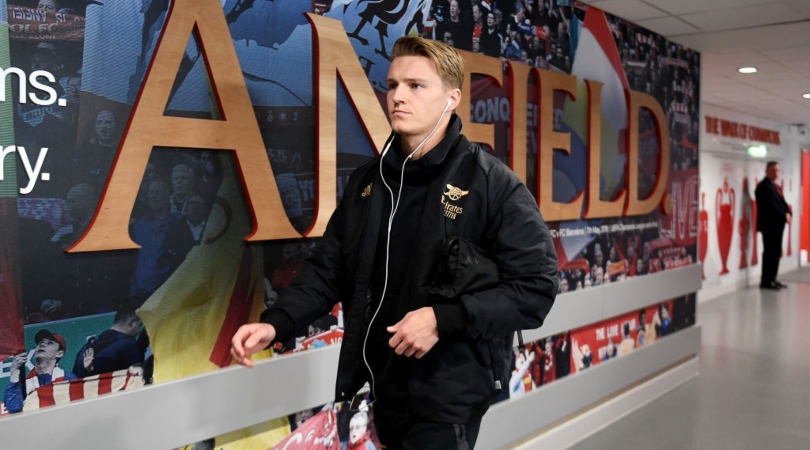
These youth football festivals were secondary to the Odegaards’ own tour of the continent, as the gods of the game pitched their projects to the family. In a parallel universe, he could have perhaps joined Arsenal’s rivals instead.
“He actually grew up as a massive Liverpool fan,” Hunter says. “So Liverpool pushed the boat out to try and get him. They got Steven Gerrard to show him around the Melwood training complex, as it was at the time. They put a big effort into convincing him that this was the right environment, playing on how long he’d been a supporter.”
Eventually, Martin and his father realised Real Madrid were the only option for them while watching Los Blancos on TV on the sofa. They phoned Madrid there and then to accept the offer.
Liverpool were gutted, given how strongly they campaigned. Wenger, too, filed Odegaard in the ‘ones that got away’ scrapbook with Zlatan, Messi and Cristiano. The boy-wonder from Drammen was instead going to play under arguably the greatest playmaker of all time in Zinedine Zidane, coach of Real Madrid Castilla, the club’s reserve side.
Never forget when Martin Odegaard's dad did this to get him into Football Manager... 😂 pic.twitter.com/0e7khmdUB2January 16, 2025
It was as poetic as his playstyle – but this was not the same football club that Zidane has cavorted across the turf for and Real Madrid had recently revolutionised their entire transfer policy just to spite their bitterest foes.
“The context around Madrid is important when talking about the move,” Hunter recalls.
Two years prior, Los Blancos had a 21-year-old Neymar within their grasp, only for Barcelona to snatch Santos’ next samba superstar in broad daylight. For a club that doesn’t taste defeat too often, the sting was unbearable for president, Florentino Perez.
“Florentino told his scouting team, ‘Get me as many of the biggest young talents in the world as possible, so we can stick it up Barcelona’s nose: if there’s another Neymar, I want the next six of them,’” Hunter says. Odegaard was one of the lucky few.
“It was the biggest club in the world and we thought it was the perfect step,” Fossum remembers. “He was only 15 and everyone thought he was on course to become Norway’s greatest-ever player.”
Heritage is heavy. Perez had pivoted 180 degrees from Galacticos to prodigies and at the Bernabeu, wonderkids were never going to fly under the radar: especially not this one. Odegaard, like all good superstars, arrived to the adoring chatter of paparazzi an hour late. His blonde mop unwashed and wearing an old jumper, he’s since told of how he cringes looking back at how unprepared he was for the press conference where he was unveiled as Madrid’s next top model.
A prince without precedent at Real
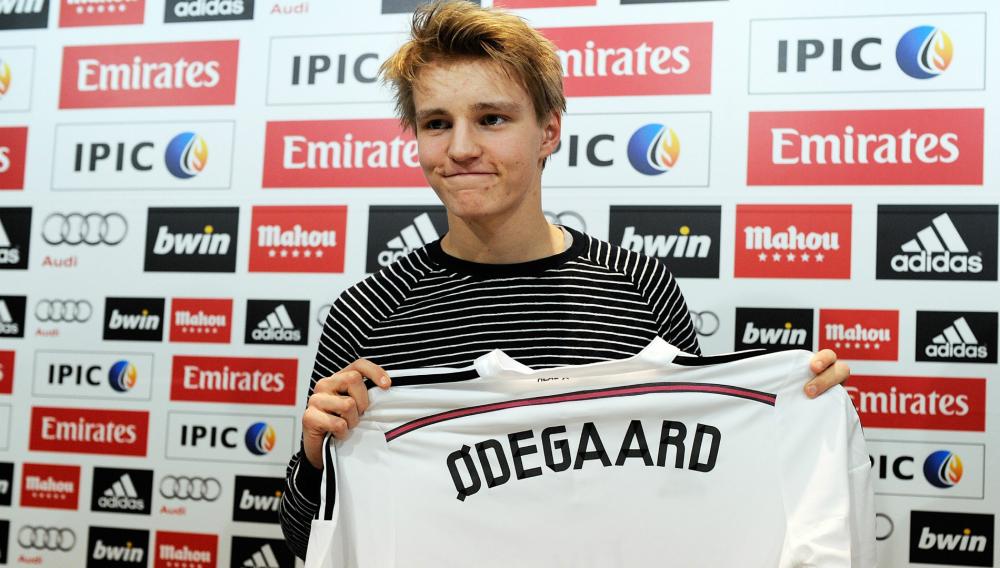
“It was really unusual,” Tore Haugstad says. “I’d moved to Madrid three months before Odegaard and I remember, the Norwegian press were trying to put into words what this meant. It was really difficult: there was no precedent at all. The top foreigners we’d had were Tore Andre Flo at Chelsea, Ole Gunnar Solskjaer at Manchester United: that was it. We hadn’t had anything like this before.”
“It’s unbelievable and it’s incredible, I’m ready for the best club in the world,” Odegaard gasped into the flashlights that afternoon, despite his rather casual appearance next to a besuited Emilio Butragueno, ranked at no.10 in FourFourTwo's list of the greatest Real Madrid players of all time. Others thought him to be far from ready.
“When Odegaard signed, the stats will tell you that he principally played for Castilla,” Hunter says. “But Florentino wanted him involved in the first-team squad. Carlo Ancelotti, the manager at the time, said no.”
And so, the teen sat between the Castilla youth set-up and the first team, a rope with which senior figures at the Bernabeu would play tug of war. In February, Real Madrid’s new starlet made his bow for the reserves in a friendly against Beijing Guoan, glittering on the ball. The next thing he knew, he was included in the Champions League squad: not quite the slow progress some expected. Mixed messages, at best.
Having Zidane as my coach was a very nice thing, but it wasn't good for my self-confidence.
Martin Odegaard
Sporadic bursts off the bench for Castilla would follow but just two months after joining, Odegaard was publicly dropped by Zidane, with the Castilla boss finding it hard to work with a player training with the senior team. The language barrier was blamed, too.
“Odegaard’s said himself that he stagnated a bit – it’s easy to see why,” Haugstad says. “Castilla were playing in the third division, grouped together with the Basque teams, who are really strong and physical. A lot of the pitches were bad and there were a lot of rumours about him not fitting in and just playing for himself. He was a kid at the time: this was really harsh.”
During one international break, Spanish outlet Diario AS reported on the jealousy from other youngsters around Odegaard’s reported £80,000-a-week wage. The reserve squad had become imbalanced as a result, they said, and the teen had rejected requests to train with them more than his contract stated he could.
Weeks later, they gave Odegaard a mark of 0/10 for a performance in a Castilla game, in which the side clawed back an equaliser after the Norwegian had been substituted. It felt more than a little mean: Odegaard’s performance was objectively not that bad.
“Having Zidane as my coach was a very nice thing, but it wasn't good for my self-confidence,” Odegaard admitted in a 2019 interview. Eventually, Carlo Ancelotti would label the transfer a “PR move” from Perez.
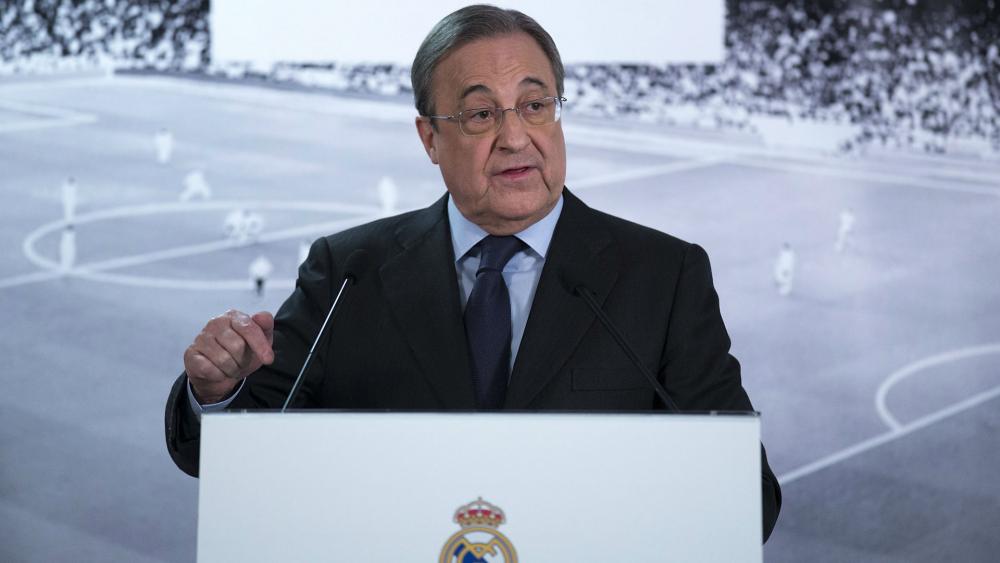
“He could be the best player in the world: I don't care because he was not a player I asked for,” the Italian snarled after departing as manager. Odegaard was a player caught between two ideologies: the president wanted to integrate the jewel of the club’s next great era, while the manager pushed a boulder up a hill in the present day.
Instead, loans in the Netherlands beckoned before Odegaard settled at Real Sociedad. Like his hometown of Drammen, San Sebastian is a quiet town on the coastline. It could offer the midfielder tranquillity and familiarity, as he settled into La Liga properly once more.
“The Basque culture is more like Norway,” Odegaard later told the Player’s Tribune. “People are more reserved on the outside but once they take you into their hearts, they are so caring and protective. You become one of their own. I loved that.”
Now as a no.10 in a 4-2-3-1, Odegaard was the centrepiece at La Real on loan. He had a license to ad-lib, weaving through defenders with ethereal movement, sliding line-breaking passes like they were geometric jokes in his pass maps. In just his second appearance, he converged on a counter-attack, and with two touches – the first deft, the second devastating – he won La Real the game, 1-0. He was September’s player of the month in La Liga: it was an invitation to sit up and watch him.
Madrid is a very pitiless, ruthless environment.
Graham Hunter
“At Real Sociedad, he played for a club who wanted him,” Hunter says. “He was working under a coach, Imanol Alguacil, who was used to working with young players ready to break into the first team. The brand of football that Alguacil wanted to play was very attacking.
“Alguacil knew when to put pressure on youngsters, when not, and he’s quite a demanding man as well. Odegaard was somewhere the fans loved him, where he was playing 30-plus games for a team that played very attractive football – there was a blossom of maturity.”
For the first time, the then-20-year-old told his dad that he wanted to step out and live by himself. He’d grown in strength, physically, too. Now he was to conduct the orchestra at the Anoeta.
Odegaard would end 2019 with 10 goals and assists for La Real in 18 games. In the New Year, he scored and assisted six times in five Copa Del Rey ties to fire his side to the final, including one against Real Madrid to knock his parent club out: a satisfying sucker-punch if ever there was one. He looked ready for the Real Madrid renaissance.
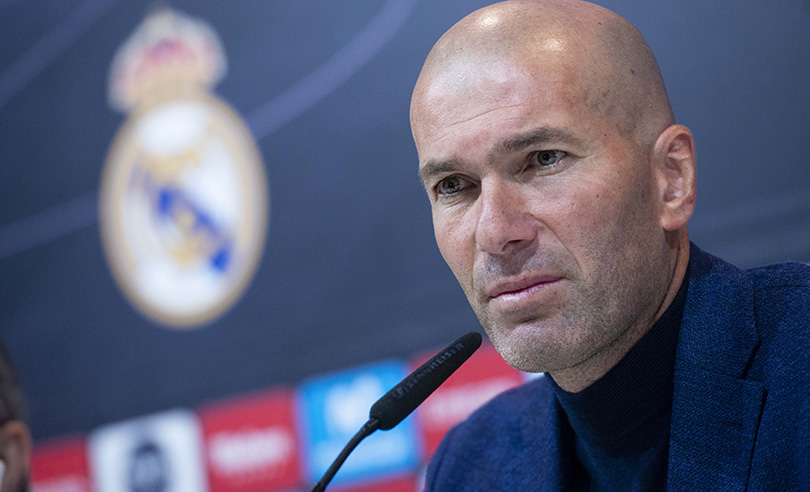
With Zinedine Zidane now in the top job, he was recalled in the summer of 2020. He would make just three starts in the league for Los Blancos.
“Madrid is a very pitiless, ruthless environment,” Graham Hunter reflects. “Look at how brutally Vinicius Jr was treated. No one was going out to bat for him until he took the reins himself and exploded.”
Zidane was on a mission to make Real Madrid prettier to watch – but like Ancelotti before him, was caught between the present and the future while trying to integrate younger talents.
“Getting called back to Real Madrid and then not getting to play: that was the last thing that he wanted,” Haugstad laments. “I think the most important thing at Real Sociedad was not that he was loved but that he found a place to settle. He was really tired of being loaned out all the time, he wanted to really find a home.”
At Real Sociedad, Odegaard had a license to ad-lib, weaving through defenders with ethereal movement, sliding line-breaking passes like they were geometric jokes in his pass maps.
The tide had turned: for both parties. Odegaard had endured a few too many knockbacks from his own employers, while Real Madrid were starting to see the Norwegian as a cashable commodity. In January, Odegaard left for Arsenal, again on loan. He’d sign permanently months later.
“I think there was a misperception at Real Madrid that Odegaard didn’t have the character to handle the pressure and produce in the biggest moments,” Hunter says. “Too many people either weren’t paying enough attention to Odegaard or they lost a little bit of faith.”
“We had conversations with Martin at Vitesse about what Zidane and Ronaldo were like,” former team-mate Navarone Foor recalls. “He told us that the guys at Madrid were just on a different level: if Real Madrid could just toss a player like Martin Odegaard aside, I want to know: what are the standards?
“If Odegaard doesn’t get a chance there, I can’t imagine how good they are.”
North London Forever
FourFourTwo met Martin Odegaard in August 2022, days before he was announced as the new Arsenal captain. After flitting in and out of the team in the second half of the 2020-21 season, he cemented himself as Mikel Arteta’s general in the sequel season, leading Arsenal from midfield. The Gunners finished fifth, narrowly missing the top four.
Odegaard had only been in north London for 18 months, we reminded him, yet incredibly, Mikel Arteta was now the longest-serving manager of his entire career. He laughed.
“As you say, I moved around a bit too much and it was maybe not the best thing,” he said with a smile. “But I learned a lot from it. I went to Madrid very young – of course, it’s hard to play there so I had to go elsewhere. It was not the best situation for me, I wanted to get stability.
“I’ve found that here. I’m really happy and I feel at home.”
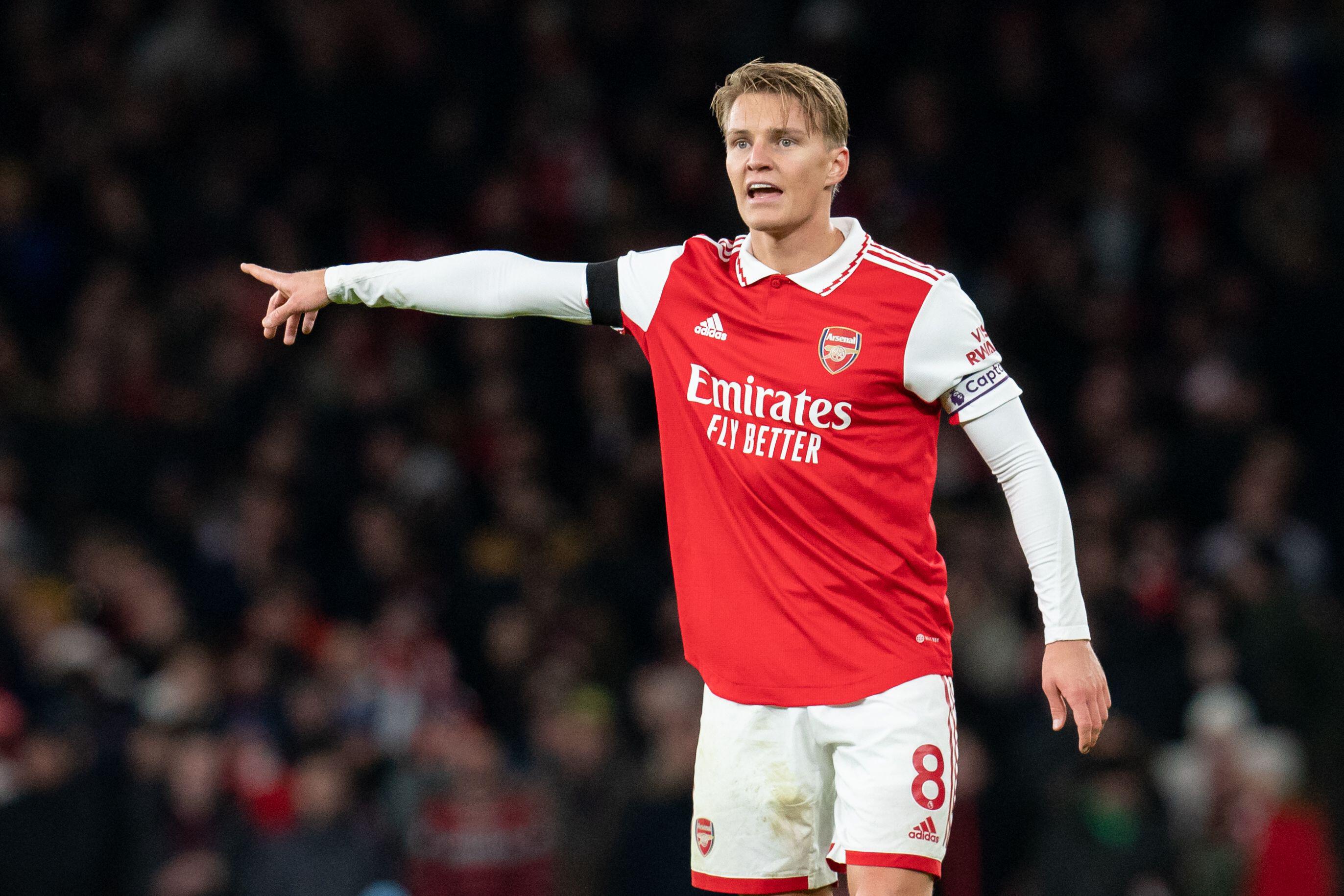
If anyone would have understood Odegaard’s position, it would be Mikel Arteta. After coming through his hometown team as a teenager, the midfielder joined Barcelona as a highly-regarded teen, fighting for playing time with senior figures. He went on loan abroad, impressed at Paris Saint-Germain, yet Barça cashed in on him anyway, not offering him a chance he craved. The expectation, the confidence and the lack of it: Arteta would have noticed all three watching Odegaard’s trajectory.
“Be careful with that number,” Arteta told Odegaard while his new signing was snapped by photographers holding the no.8 jersey. Of course: it was the same shirt Arteta wore for the Gunners.
Even in his mid 20s, Odegaard is finding new layers to his game. In a side of younger talents, their captain is one of the wiser heads. He’s still deft and delicious, can drop a shoulder and thread passes through needles, yet he scans the pitch with eyes that feel far older than his age. A Timelord of a footballer, he’s lived so many lives in this game, already: the wonderkid, the lost soul and now, the captain of this ship.
He’s evolved as a player; he’s changed as a person. Loans left scars. Lack of belief in him perhaps cut deeper still. He’s had to grow up the hard way – and he’s arrived, right back where he started, eight years after that fateful steak dinner with Arsene Wenger. The long way around.
“I watched him during the Spain vs Norway Euro 2024 qualifier,” Graham Hunter says. “He shouted to Alexander Sorloth to mark Nacho. Sorloth didn’t react – so Odegaard ran over to him and shoved him, like, ‘Go and f***ing do what I told you to!’
“I thought that’s certainly not the Odegaard that arrived at Madrid – but it’s also not the Odegaard even from Real Sociedad. He’s markedly changed.”
It’s a coming-of-age story, unlike many others in football. And it’s still not complete.
“If he were to captain Arsenal to a Premier League title… seeing a Norwegian lifting the Premier League trophy would be surreal for us,” Thore Haugstad says. “That image would last forever in Norway. It’s been a rollercoaster – but so far it has a happy ending.”
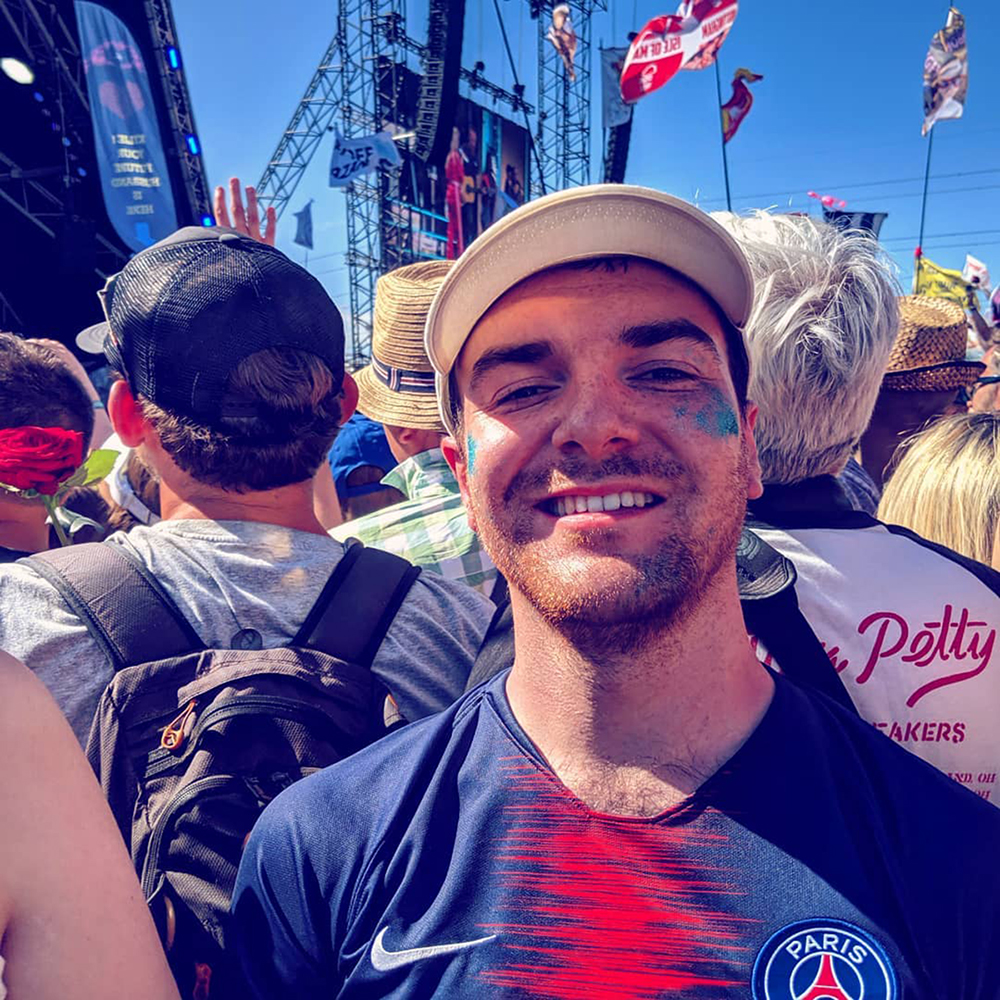
Mark White has been at on FourFourTwo since joining in January 2020, first as a staff writer before becoming content editor in 2023. An encyclopedia of football shirts and boots knowledge – both past and present – Mark has also represented FFT at both FA Cup and League Cup finals (though didn't receive a winners' medal on either occasion) and has written pieces for the mag ranging on subjects from Bobby Robson's season at Barcelona to Robinho's career. He has written cover features for the mag on Mikel Arteta and Martin Odegaard, and is assisted by his cat, Rosie, who has interned for the brand since lockdown.
